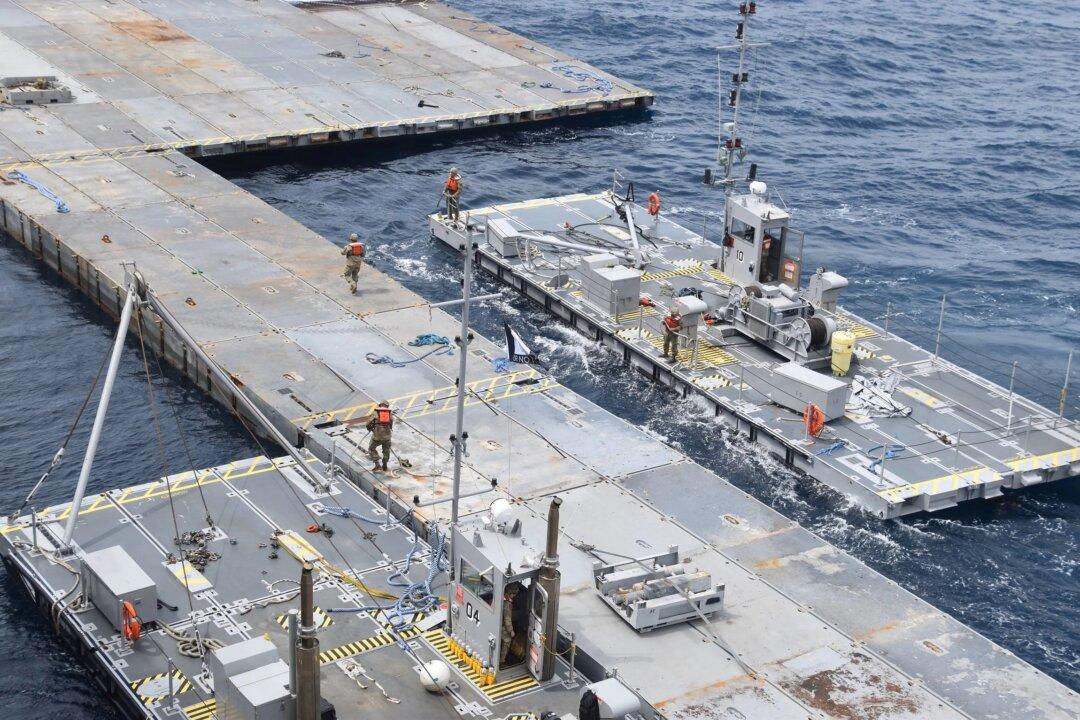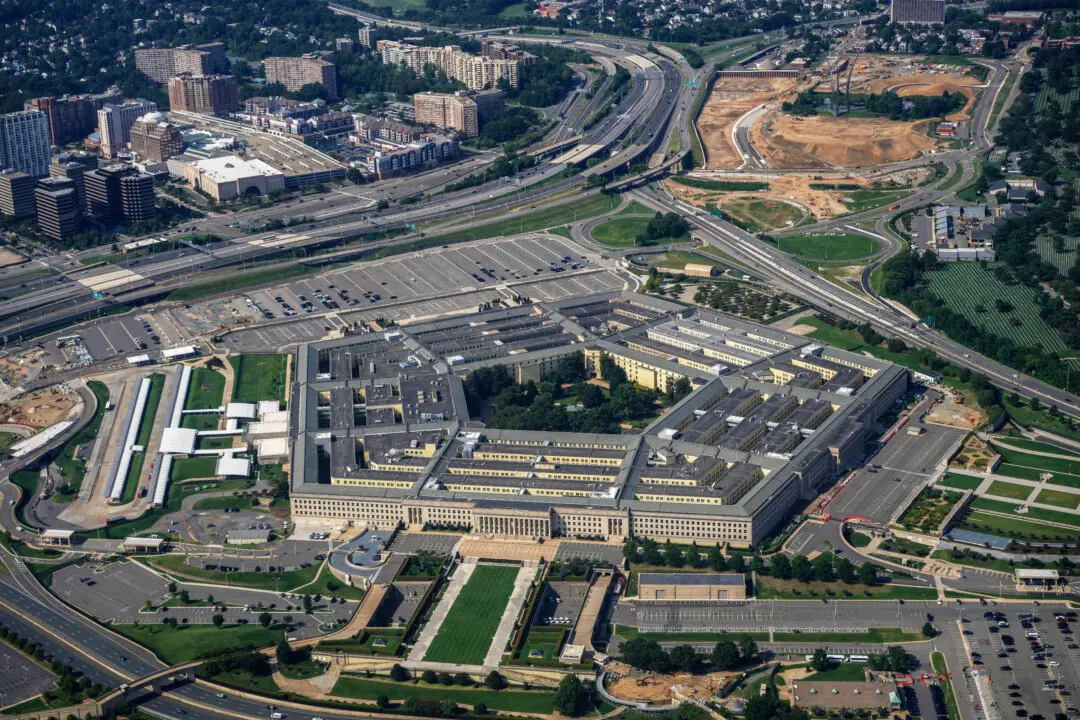The U.S. military has announced that U.S. forces have finished installing a makeshift pier for delivering humanitarian supplies into the Gaza Strip, and aid has begun to flow into the territory.
President Joe Biden initially ordered the U.S. military to construct the pier in March, to facilitate increased deliveries of food and humanitarian supplies by sea. Speaking at a news briefing on May 16, Deputy Pentagon Press Secretary Sabrina Singh announced that U.S. military engineers, working with Israeli military counterparts, had successfully anchored the temporary pier system to the beach in Gaza.





